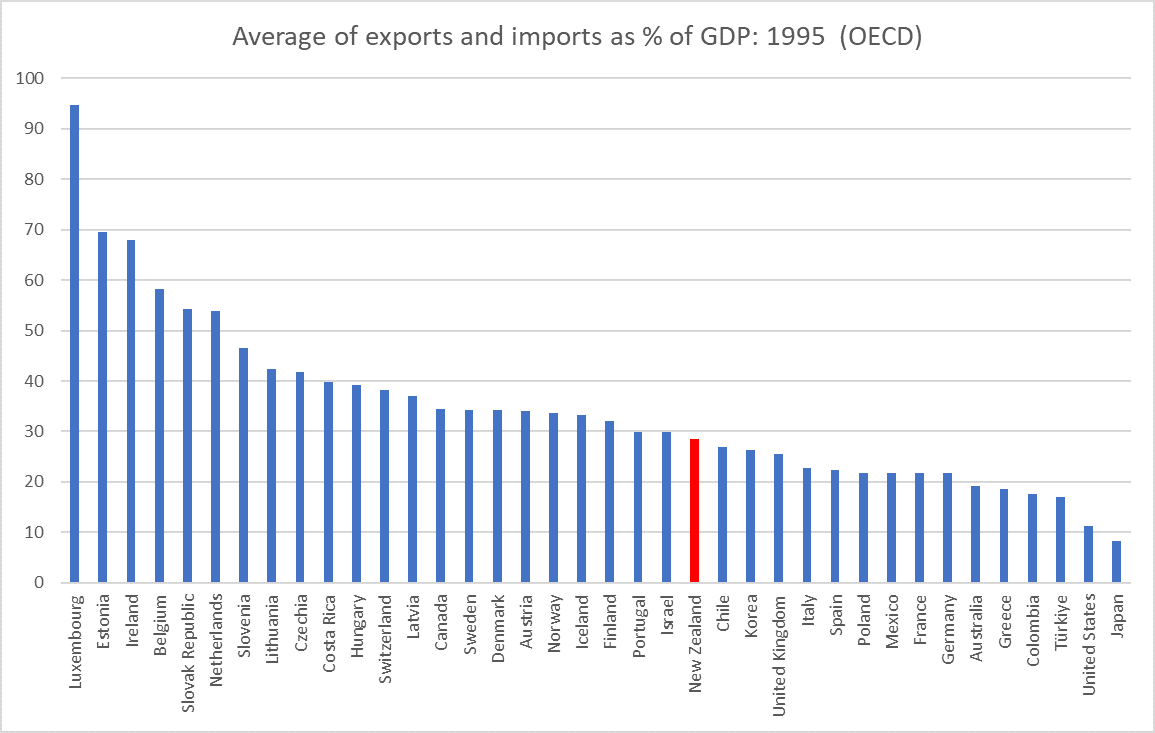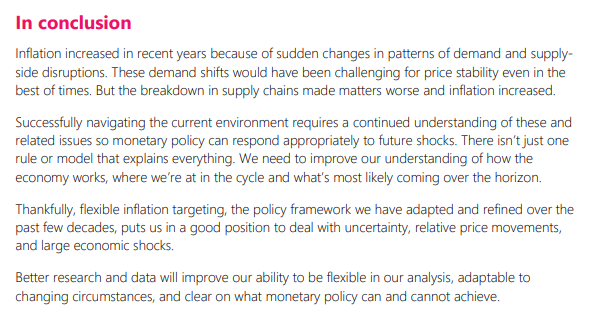The Productivity Commission closes its doors on Thursday and goes out of existence.
There have been a couple of recent articles on the demise of the Productivity Commission, and the chair (Ganesh Nana) has even put out his own statement (not exactly compelling) on productivity, and policy options for improving New Zealand’s dismal performance.
There has been a degree of unreality about some of the recent comments. Getting rid of the Commission was an ACT policy (and one I support) but when David Seymour was quoted as saying it wasn’t about left-wing economist Ganesh Nana personally we can take that with a pinch of salt. It wasn’t possible for an incoming government to remove the existing commissioners, all of whom were either fairly vocally left-wing, not at all actually focused on or expert in productivity, or in a couple of cases both. Had the previous government (a) appointed latterly people with more-evident expertise and interest in productivity, and b) been assigning inquiry topics more specifically focused on productivity it seems unlikely National would have been as ready to go along with simply abolishing the Commission. And when Nana himself is quoted as claiming he and the Commission were “blindsided” by the decision to close them down then (if he is being straight) you have to wonder about the political nous of the commissioners. But perhaps they had just hoped to limp on until the Budget?
I was an enthusiast early on for the idea of the creation of a Productivity Commission in New Zealand. It was one of the recommendations of the 2025 Taskforce report in 2009 and was also a bit cheap gift to the ACT party, then supporting National in government. Supporters tended to look across the Tasman at the contribution the Australian Productivity Commission had made to enriching policy research and analysis there.
But I was also fairly sceptical from early on as to just how long the new New Zealand Productivity Commission would last. That wasn’t because I expected them to do bad work or even fail to contribute to the New Zealand debate (and our aggregate productivity performance was dire and longstanding). it was more the track record: the Monetary and Economic Council had come and gone, as had the Planning Council. Both had at times produced useful papers, but that hadn’t saved them. It wasn’t clear what was likely to be different about the Productivity Commission over the medium term, whether what saw them off was getting offside with the government of the day, fiscal stringency, lack of critical mass or whatever. There wasn’t, after all, any sign of a passionate embrace by either main political party of the cause of markedly lifting New Zealand’s productivity growth.
The Commission did produce some useful papers. Of the inquiries they were assigned by ministers, perhaps the work on housing was most useful, helping to build a wider recognition in New Zealand that supply and land-use issues really matter. And when, as in the earlier years, they had a bigger research budget, that team under Paul Conway produced some useful and interesting papers (and Conway’s narrative of the productivity failures was itself useful). More recently – and I think the change pre-dates Nana – the value of the output has been less evident. Neither chair has been a productivity guru, but Murray Sherwin (the first chair) was an experienced and effective bureaucratic operator and not I think seen as a partisan figure.
In more recent years – I think even pre-Nana, although that shift brought the case into sharper focus – I’ve become more sceptical of the place of the Productivity Commission at all in the specific New Zealand situation. First, it isn’t obvious political parties really care about productivity anyway – beyond an occasional talking point in opposition or in the first few weeks of government. But even if they did, it isn’t obvious that a small Commission just up the street from The Treasury was going to consistently have a lot to offer. I’ve highlighted before the contrast with the Australian Productivity Commission: which (in a much bigger, and richer, country) has the size to allow the creation of critical mass and concentrated expertise at the staff level. And much of the staff is in Melbourne rather than Canberra, which represents a different sort of career option for public sector economists for whom Canberra just isn’t that appealing as a place to live. And we don’t have the sort of generally-respected senior productivity-guru for whom the Commission might nevertheless have been a useful longer-term platform for helpful contributions.
And it isn’t as if other government agencies are overflowing with economic talent. Treasury likes to tout its role as the government’s “premier economic adviser”, but while they clearly have a say on most things, I doubt anyone looks at that agency now and thinks of it as a powerhouse of economic analysis and advice (whether at the very top or further down the organisation). So if wanted to beef up the quality of medium-term economic analysis and economic policy advice, I’d come to the conclusion that I would look to focus scarce resources on fixing The Treasury, and building one really capable economic policy agency. There are counter-arguments of course: Treasury has lots of day to day stuff to do, and as a line ministry is (appropriately) more subject to ministerial influence, and to agency incentives to manage what is said on one thing to keep influence with ministers on other things. But, as we saw with the Productivity Commission, being an independent Crown entity might have left the Commission free to say what it liked, but ministers managed that by (a) choosing sympathetic commissioners, and (b) assigning inquiry topics that would not prove troubling or awkward. So I’m just not convinced that we were better with two bodies and would have preferred to focus on rebuilding Treasury. But, of course, there has been no sign yet the government actually cares about that either (if they did they would probably not be renewing the Secretary’s contract in the next few weeks, her term expiring in September).
Of course, Nana did little to help. Readers may recall the OIA releases a couple of years ago, written up in the Herald and here about the disruptive influence (for little/no apparent benefit) Nana’s arrival was.
We are told by the government that the resources freed up by closing the Productivity Commission are to be used to create a new Ministry for Regulation. Thus far, three months into the government’s term nothing much has been seen or heard of the new ministry (it doesn’t yet seem to have any substantive existence and there has been no sign of the appointment of (or even an advertisement for) a chief executive. I guess the financial resources perhaps don’t come free until 1 March, but….the clock is ticking and before we know it it will be election year again.
There is much about regulation that could be done much better, but I’m sceptical about the proposed ministry. Since it might well prove a casualty the next time the left takes office, few people are likely to see working there as a longer-term career move. If so, a lot is going to depend on the calibre – some mix of intellectual guru and effective bureaucratic operator ideally – of the person appointed as chief executive of what will be a small agency. Really able people will seek to work for someone who commands a lot of respect, and who is likely to be seen as effective and relevant. Otherwise, the risk is that the place is filled up with a few dozen of the many public servants and consultants being displaced by the government’s current cuts and eager for a job, any job, in a tougher public sector job market. Time will tell I guess, but time is passing.
Finally, on a personal note, I have been reflecting on the future of this blog. I have recently been appointed to the board of Papua New Guinea’s central bank, the Bank of Papua New Guinea. I worked there on secondment from our Reserve Bank decades ago, and the PNG central banking law requires that at least one board member has international experience of central banking and does not live in PNG. I’m looking forward to the opportunities and challenges.
There aren’t direct conflicts with this blog (I was appointed in the knowledge that I write it, and no one has suggested I stop). I don’t, and won’t, write about Papua New Guinea. On the other hand, many of the central banking issues I’ve written about here – mostly in an RBNZ context – are relevant for any central bank. I don’t want views I espouse here in a New Zealand (or international) context to be used to bash BPNG. Also, while I don’t expect to have any links to the Reserve Bank, BPNG (as one of the various South Pacific central banks) does. And the BPNG role is going to chew up a fair chunk of my time.
I have considered stopping writing altogether about central banking but at this point I don’t think I will. But I may be a bit more choosey about my topics, and readers should bear in mind that in what I write on central banking I am a bit less of an unconstrained outsider than I have been. Whatever direction the blog takes, between holidays and other commitments there probably won’t be much here on any topic until at least after Easter.





